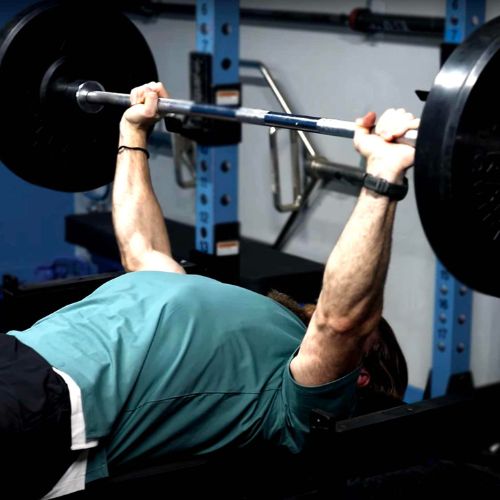Testosterone is a powerhouse hormone that plays an influential role in the male and female body. The hormone is known for its profound effect on everything from sexual function to fat distribution and more. Considering testosterone affects so many different body processes, it's important to maintain ideal levels of the hormone for optimal functioning.
Let's look at the ideal levels of the hormone and more below:
Important Facts
Why are Testosterone Levels Important?
The importance of testosterone comes from its influence on several physiological and psychological functions. When levels of the hormone are imbalanced, it affects how the body functions. Let's take a look at the hormones' core functions in males and females below:
Sexual function
Testosterone is responsible for developing male features and complete sexual function in men, while its in charge of the growth, maintenance, and repair of reproductive tissue in women.
Fat distribution, muscle, and bone health
Testosterone helps build and maintain ideal muscle mass and bone density. It also helps with even fat distribution.
Supports red blood cell production
Red blood cells transport oxygen from the lungs to body tissues. The tissues use oxygen to produce energy and release waste.
Mood and cognitive function
The hormone impacts moods, motivation, and cognitive function, including memory and spatial ability.
Energy and vitality
Testosterone helps with energy production, vitality, and general well-being.
Fluctuating testosterone levels lead to various symptoms, which are, in essence, the opposite of their benefits or functions. Therefore, it is important to maintain adequate levels of testosterone to support your overall health.
High T-Levels
Men
Testosterone levels that measure over 950 nanograms per deciliter (ng/dL) are considered high in men. High testosterone levels in men is referred to as hypergonadism. Genetic disorders, tumors in the testicles or adrenal glands, or anabolic steroid use can be the reason behind hypergonadism.
We list the common symptoms of high testosterone in men below:
Women
Testosterone levels that measure over 70 nanograms per deciliter (ng/dL) are considered too high for women. High levels of testosterone in women is called hyperandrogenism. The condition is often caused by PCOS (polycystic ovary syndrome), adrenal gland disorders, or certain medications.
We list the common symptoms of high testosterone in women below:
It's important to note that having high testosterone levels doesn't necessarily mean you will experience all of these symptoms at once. Some may experience a few of them, while others may experience non.
Low T-Levels
Men
If testosterone levels measure below 300 nanograms per deciliter (ng/dL), it is considered low—hypogonadism. This condition is often caused by aging, genetic disorders, testicular injury, chemotherapy or radiation therapy, or the use of specific medications.
We found that low testosterone may induce the following symptoms in men:
Women
Testosterone levels that measure below 15 nanograms per deciliter (ng/dL) lead to hypoandrogenism—low testosterone in women. The inevitable process of aging, menopause, use of certain medications, or genetic disorders can cause low testosterone levels in women.
We found that low testosterone may induce the following symptoms in women:
These symptoms rarely present themselves altogether. Most men or women experience one or two symptoms, while others experience no symptoms at all.
What Are the Ideal Testosterone Levels by Age?
Ideal testosterone levels cannot be pinned at a specific number, as the perfect level changes as we age. After extensive research, we found the ideal levels matched to age groups in men and women. Let's look at them below:

Men

Women
Although these levels are considered the "golden standard," they won't be seen in every individual. This allows for slight variation in the numbers.
How To Test Testosterone Levels?
Testosterone levels can be tested using several methods. The most common ones include blood, saliva, and urine tests. All these tests involve collecting the relevant sample and sending it to a lab for analysis. It's important to note that the timing of sample collection can impact results.
For example, testosterone levels are typically at their peak in the morning, so doing tests in the morning will yield the most accurate results. Certain medications and medical conditions can also influence testosterone levels, so discuss this aspect with your test support personnel before testing.
How To Restore Ideal Testosterone Levels?
Testosterone levels can be used using several different methods. The right choice often comes from trial and error, professional healthcare support, and testing. Let's look at some of the ways you can restore testosterone levels below:
Exercise and Diet
Regular strength and weight-centered exercises paired with a protein-zinc rich diet can help naturally restore testosterone levels.
Sleep
A large volume of testosterone production happens at night, so aiming for 7-8 hours of sleep per night is essential for testosterone restoration.
Supplements
Supplements that contain ingredients like vitamin D, zinc, fenugreek, and ashwagandha can help bring testosterone levels to an ideal peak.
Hormone Replacement Therapy (HRT)
In some cases, HRT may be necessary to restore ideal testosterone levels. This involves taking testosterone in the form of a pill, patch, gel, or injection.
Lifestyle changes and natural remedies may take some time to produce noticeable results, so it's important to be patient and consistent.

